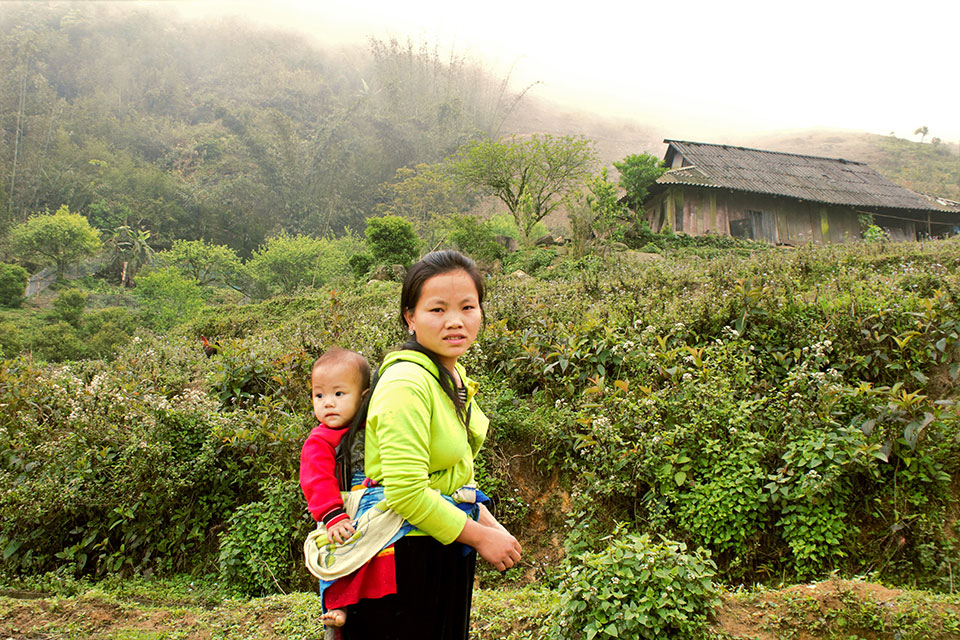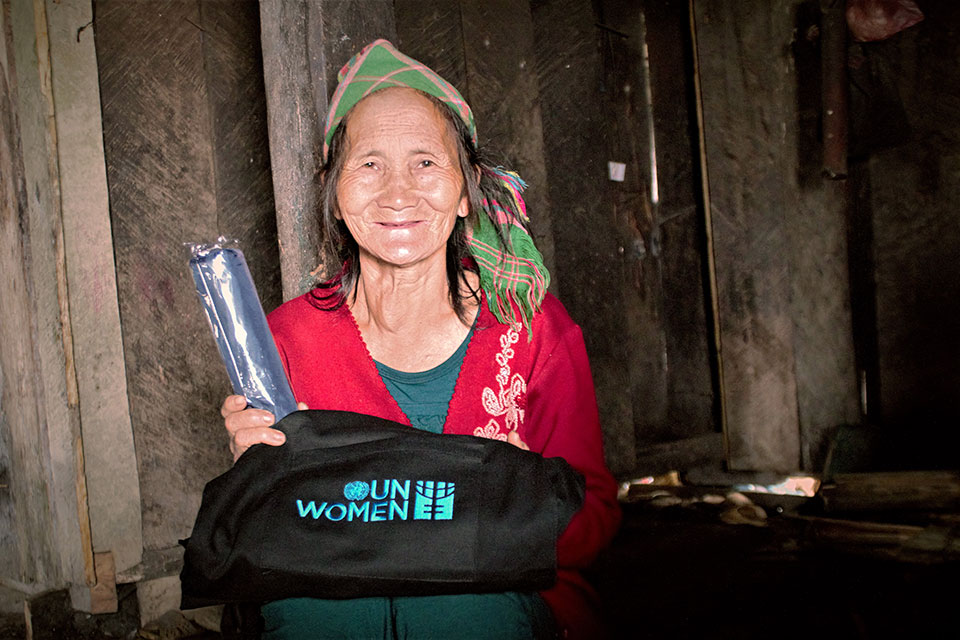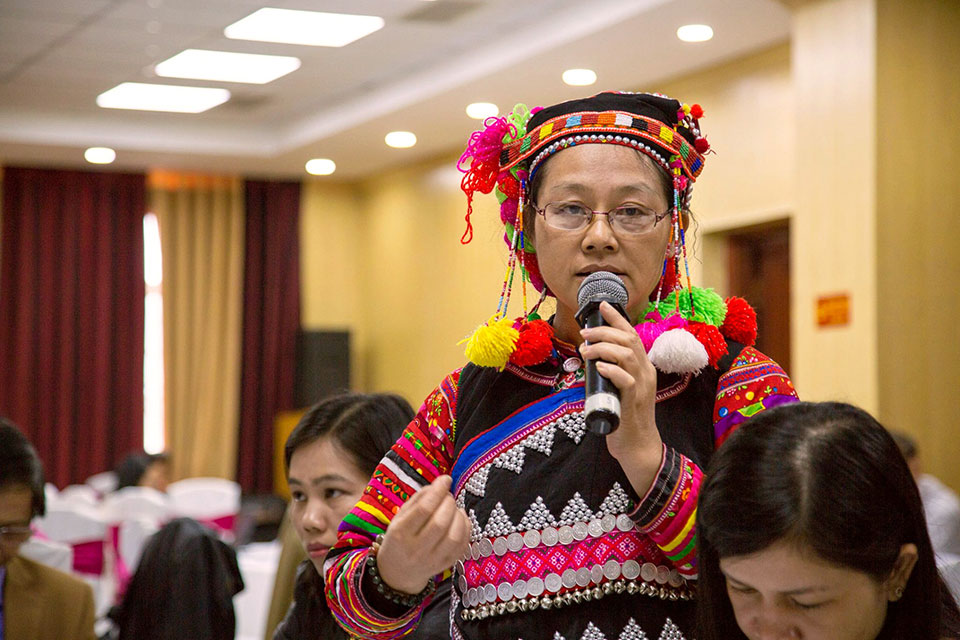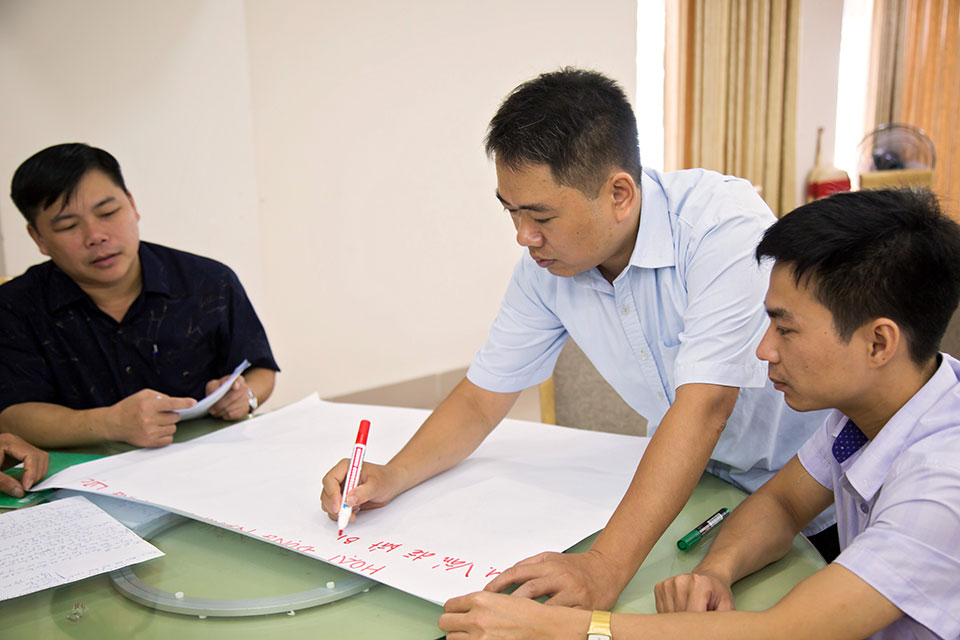Using gender budgeting to empower ethnic minority women in Viet Nam
Date:

Giang Thi So remembers the day her childhood ended as if it were just yesterday. “I was on the way home from the market fair when my husband kidnapped me. I spent all night crying in his house. I did not know him before that day, but I knew I would have to marry him. I was just 15.”
Fast facts: Ethnic minorities in Viet Nam
- There are 54 recognized ethnicities in Viet Nam
- The majority Kinh ethnic group make up 85.5 per cent of the population in Viet Nam, with the remaining 53 ethnic groups accounting for 13.4 million people
- Many of the ethnic minority groups are concentrated in geographically remote and mountainous regions of the Northern Highlands bordering China, and the Central Highlands
- All ethnic minority are more socio-economically disadvantaged in comparison to the Kinh group
- Child marriage among the 53 ethnic minority groups is 26.59 per cent on average
Source: Figures on Ethnic Minority Women and Men in Viet Nam 2015
So is from the H’Mong ethnic minority in Lao Cai, a northern province of Viet Nam, and now in her 70s. She had six children with her abductor and rapist, who also became her husband. “When my eldest was 16 and the youngest just 17 months, my husband left our family to marry a woman in another village. He came back occasionally to ask me for money, and often beat me. Once he even broke my left hand,” she shared.
UN Women visited So’s home in Lao Cai in April 2018, as well as other ethnic minority households, to better understand their situation. Their experiences are shaping UN Women’s advocacy efforts in the country, to incorporate gender issues into development policies and programmes that benefit ethnic minorities.
Women and girls from ethnic minority and across Viet Nam are especially vulnerable to violence and discrimination, both because of their gender and restrictive social roles and expectations within their homes and communities, as well as their ethnicity. They also lack access to services and economic resources, such as land and financing, even more than non-ethnic and non-indigenous women. Until recently, one of the barriers to adequately addressing their needs and challenges was the lack of data about their experiences.

In 2017, with financial support from the Government of Ireland, UN Women and the Committee for Ethnic Minority Affairs (CEMA) commissioned a report on “Figures on Ethnic Minority Women and Men in Viet Nam 2015”. The report gathered and presented first-ever data on the socio-economic situation of the 53 recognized ethnic minorities in Viet Nam, disaggregated by both gender and ethnicity. The research showed, for example, that while 2.61 per cent of all marriages in Viet Nam were early marriages, child marriage among the 53 ethnic minority groups was 26.59 per cent on average, with some groups reporting over 50 per cent rate of child marriages. Only 63 per cent of women from ethnic minority groups have access to adequate medical care when giving birth, which increases health risks for young mothers.

“Ethnic minority women and girls are more vulnerable in their families and communities as they face a wide range of discriminations and intersecting inequalities based on their ethnicity and gender,” said Nguyen Thi Tu, Director General of the Department of Ethnic Minorities at CEMA. “This data, disaggregated by gender and ethnicity, will strengthen our efforts to develop responsive policies that work for the diverse contexts of each ethnic minority group.”
UN Women provides technical support to CEMA on using gender-responsive budgeting, a tool that analyzes and helps distribute public funds equally to address the needs of women and men.
Since 2017, more than 70 policy makers at local and national levels in Viet Nam have received training on gender-responsive budgeting through this initiative.
“The training on gender-responsive budgeting is very helpful for our work. It provides tools for us to analyze budgets from a gender equality perspective, with the overall aim of increasing women’s empowerment,” said Hoang Dai Thang. Thang is from the Tay ethnic minority and participated in a training in July 2018 as the Head of the Ethnic Minority Policy Office working at the provincial CEMA level in Thai Nguyen province.

UN Women also works directly with civil society organizations to build their knowledge and skills in gender-responsive budgeting and supports them in advocating for the needs of women and girls to be included in ethnic minority policies and programmes.
For instance, in a workshop organized by UN Women in 2017, civil society representatives learned about practical tools, such as how to use the Citizens Report Card (CRC) method to monitor whether local budgets are benefitting women and men equally. Th participants met again later in the year to share their experiences of piloting this tool and others, locally.
A community member from Ma Tra village in the Northern Lao Cai province shared his experience of surveying people’s satisfaction with local agricultural extension services, and how it led to informing local representatives of the need to ensure women and girls were included in programmes: “It is vital to analyze community-owned assets, and challenges that communities face in ensuring women are given the same access as men to resources. We spoke out for all of the people; as a result, we received a lot of support to include women during the implementation of the programme.”
Elisa Fernandez, the Head of Office of UN Women Viet Nam sees the empowerment of ethnic minority women and girls as fundamental to sustainable development in Viet Nam: “In order to achieve the Sustainable Development Goals, Viet Nam must unlock the full potential of all ethnic minority groups to participate in decision-making—not only in public representation, but also in the private sector and in the context of the household, in order to influence the allocations of resources, power and authority.”
So’s story is a case in point. Not only was her own potential stifled by her abduction and early marriage, she and her family are caught in a vicious cycle of poverty and abuse. Her youngest daughter was also kidnapped at 15 years of age, and the last time So saw her was eight years ago.
Over the coming years, with the support of the Government of Ireland, UN Women will continue to work with the Government and civil society partners to empower women and girls from ethnic minority communities across Viet Nam.